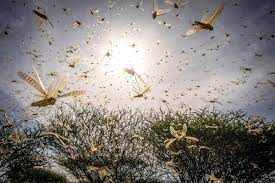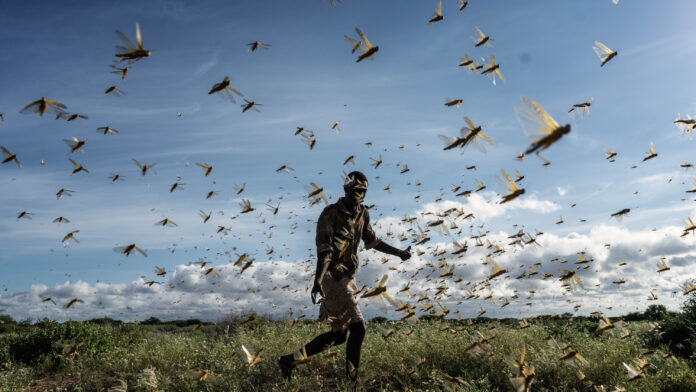
/
RSS Feed
Extreme wind and rain may lead to bigger and worse desert locust outbreaks, with human-caused climate change likely to intensify the weather patterns and cause higher outbreak risks, a new study has found.
The desert locust—a short-horned species found in some dry areas of northern and eastern Africa, the Middle East, and South Asia—is a migratory insect that travels in swarms of millions over long distances, damaging crops and causing famine and food insecurity.
A square kilometer swarm comprises 80 million locusts that can, in one day, consume food crops enough to feed 35,000 people. The U.N.’s Food and Agriculture Organization describes it as “the most destructive migratory pest in the world.”
The study, published in Science Advances on Wednesday, said these outbreaks will be “increasingly hard to prevent and control” in a warming climate.
Xiaogang He, author of the study and an assistant professor at the National University of Singapore, said more frequent and severe extreme weather events due to climate change could add unpredictability to locust outbreaks.
But he hoped that the study could help countries understand and address “the impacts of climate variability on locust dynamics, particularly in the context of its repercussions on agricultural productivity and food security,” and urged better regional and continental cooperation among countries and control organizations to respond quickly and build early warning systems.
To assess the risk of locust outbreaks in Africa and the Middle East and the connection to climate change, scientists analyzed incidents of desert locust outbreaks from 1985 to 2020 using the Food and Agriculture Organization’s Locust Hub data tool.
They created and used a data-driven framework to examine the insects’ patterns to find out what may cause outbreaks to happen across long distances.
They found that 10 countries, including Kenya, Morocco, Niger, Yemen, and Pakistan, experienced the majority of locust outbreaks among 48 affected nations.
The worst outbreak of desert locusts in 25 years struck East Africa in 2019 and 2020, when the insects ravaged hundreds of thousands of acres of farmland and damaged crops, trees, and other vegetation, impacting food security and livelihoods.

















